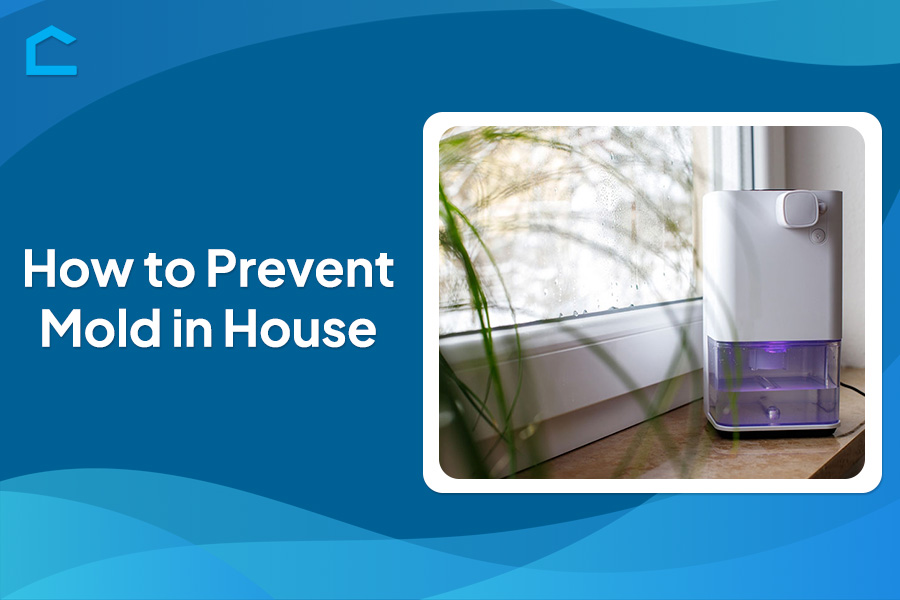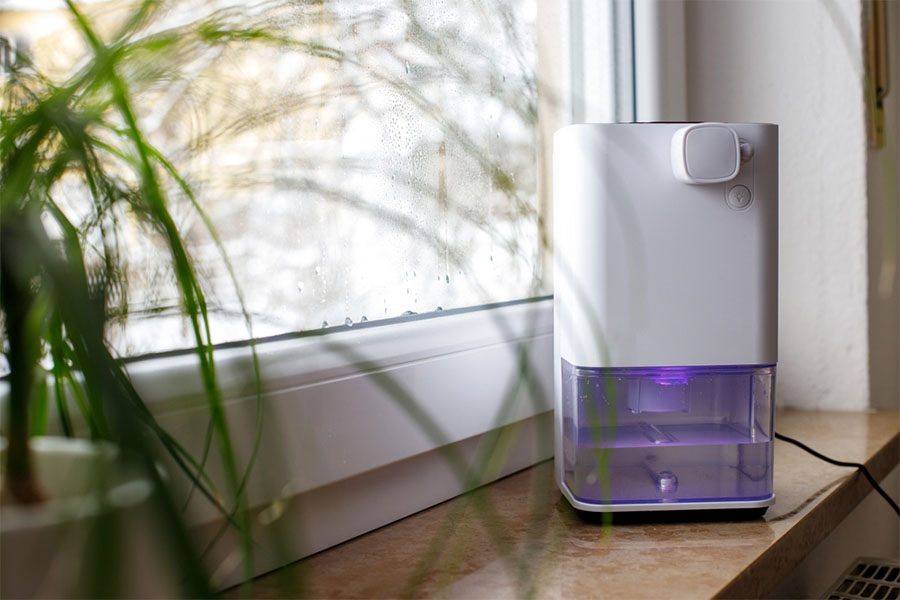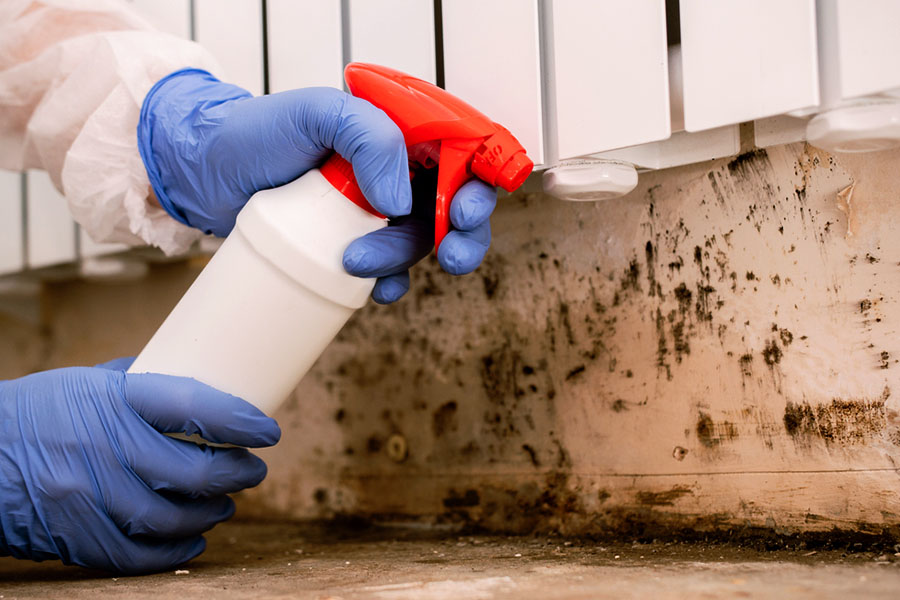How to Prevent Mold in House

Imagine a home with fresh air, clean walls, and every corner exuding a sense of cleanliness and comfort. Now, visualize achieving this without worrying about mold lurking in hidden spaces. Mold prevention isn’t just about aesthetics – it’s about creating a safe haven for your family. But do you have any idea how to prevent mold in house?
In this guide, we delve into practical and insightful ways to keep mold at bay, empowering you to effortlessly maintain a healthy and pristine home environment. Join us as we uncover how to prevent mold after water damage, ensuring peace of mind and a sanctuary where you’ll love coming home!

Source: shutterstock.com / Photo Contributor: Kateryna Artsybasheva
How to Prevent Mold in House
Mold is a type of fungus that grows in damp environments and spreads via tiny spores. It feeds on materials such as wood and drywall. If your home has water leaks or high humidity, mold can develop, potentially posing risks to your home’s structure and health.
To prevent mold, maintain a dry environment in your home. You can use dehumidifiers and fans, promptly repair leaks, and ensure good ventilation. You should also regularly check for signs of dampness and act swiftly to address moisture issues. These steps will help you keep your home mold-free and maintain a healthy living environment.
But what to spray to prevent mold after water damage? Read on to uncover effective strategies.
Effective Prevention Strategies
Maintaining optimal humidity levels
Ensuring your home has the right moisture levels prevents mold growth. You can achieve this by using dehumidifiers to extract excess moisture, particularly in places like basements. But you must clean these dehumidifiers regularly.
For rooms prone to moisture build-up, such as bathrooms and kitchens, proper ventilation is essential. Use fans during showers or cooking, and whenever feasible, open windows to let out humid air and let in drier air. Also, you need to keep track of humidity levels with a hygrometer, aiming for a 30-50% range.
Proper ventilation
Good airflow is essential to keep your home dry. You can achieve this by installing exhaust fans in bathrooms and kitchens. Remember to use these fans when activities like cooking or showering produce moisture. Ensure the fans vent air directly outside, not into your attic.
As mentioned, you need to clean the fan blades regularly to maintain the efficiency of your exhaust fans. Another effective method to circulate air is opening windows daily for at least 15 minutes. Open windows on opposite sides of a room to create a cross-breeze for the best airflow.

Source: shutterstock.com / Photo Contributor: Pixel-Shot
Regular inspection and maintenance
It’s important to regularly check your home for water problems. Look around windows, doors, and pipes for leaks.
If you see wet spots or stains, take care of them immediately. Even small leaks can lead to mold growth. Also, don’t forget to inspect your roof and the outside of your home.
Next, make sure your gutters are clean and that water drains away from your house. Examine your roof for missing or damaged shingles and inspect the foundation for cracks. Repair any problems you find promptly to avoid more damage later.
Controlling indoor temperatures
Maintaining a steady temperature in your home is another key factor in preventing moisture buildup on surfaces. To achieve this, use your heating and cooling systems wisely to avoid creating uneven temperatures that can lead to condensation.
When using air conditioning, set it to a comfortable temperature instead of making it too cold. Air conditioners naturally remove moisture from the air, but cleaning or replacing the filters regularly is essential to ensure efficient moisture control.
How to Prevent Mold in Basement After Water Damage
To prevent basement mold after water damage, you need to act swiftly. First, remove any standing water and make sure the area is dry within 48 hours. Use dehumidifiers and increase air circulation. And remove any wet materials promptly.
Next, clean and disinfect all surfaces thoroughly to prevent mold growth. Fix leaks and improve ventilation in the basement to address any underlying issues.
Moreover, apply mold-resistant products to surfaces and monitor humidity levels—keep them below 60%. Also, regularly inspect for any signs of new mold growth. If the damage is extensive, consider hiring professional remediation services to ensure thorough cleanup and restoration.
Dealing With Existing Mold
Dealing with existing mold requires safe and effective practices to keep your home healthy and mold-free. Whether you tackle it yourself or hire professionals, safety should always come first.
If you opt for a DIY approach, we advise you to wear protective gear like gloves, a mask, and goggles. This protects you from mold spores and cleaning agents. It’s also crucial to contain the affected area to prevent mold spores from spreading to other parts of your home.
On the other hand, professional mold remediation services bring expertise and specialized equipment to handle larger or severe mold issues safely. They ensure thorough removal and can advise on preventing future mold growth. Regardless of your choice, focusing on safety and thoroughness during mold removal will safeguard your home and your family’s health.

Source: shutterstock.com / Photo Contributor: Dmitriy Utlanov
Cleaning and Prevention Tips
We included some essential tips to help you prevent mold in your home. Here are the most useful ones:
- Use mold-killing products in bathrooms and kitchens, and clean regularly.
- Maintain your air conditioner: clean filters monthly, and consider professional cleaning yearly.
- Wash bedding and curtains in hot water and ensure they’re completely dry.
- Store items in plastic containers with tight lids; avoid cardboard.
- Use shelves to keep items off the floor and promote air circulation.
- Use moisture-absorbing products or a dehumidifier in storage areas.
Conclusion
Maintaining a mold-free home isn’t just about cleanliness—it’s about ensuring your living space’s long-term health and structural integrity. So, did you learn how to prevent mold in house?
As mentioned, you can effectively protect your home. This involves consistently applying preventive measures such as controlling humidity, improving ventilation, conducting regular inspections, and promptly addressing any water issues.
Remember, a proactive approach today ensures a healthier tomorrow for your home environment. Start implementing these simple steps today to keep your home mold-free and your family healthy!
